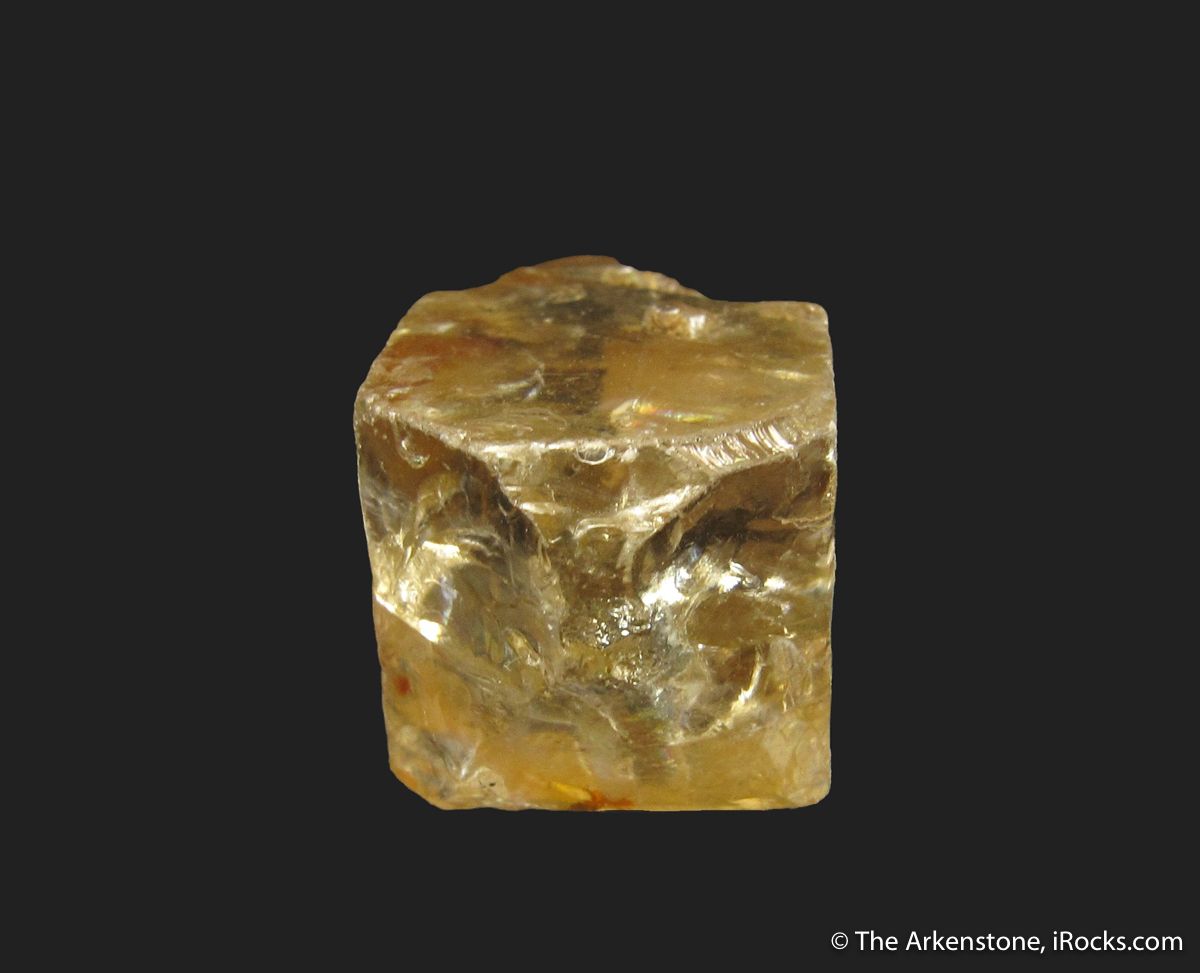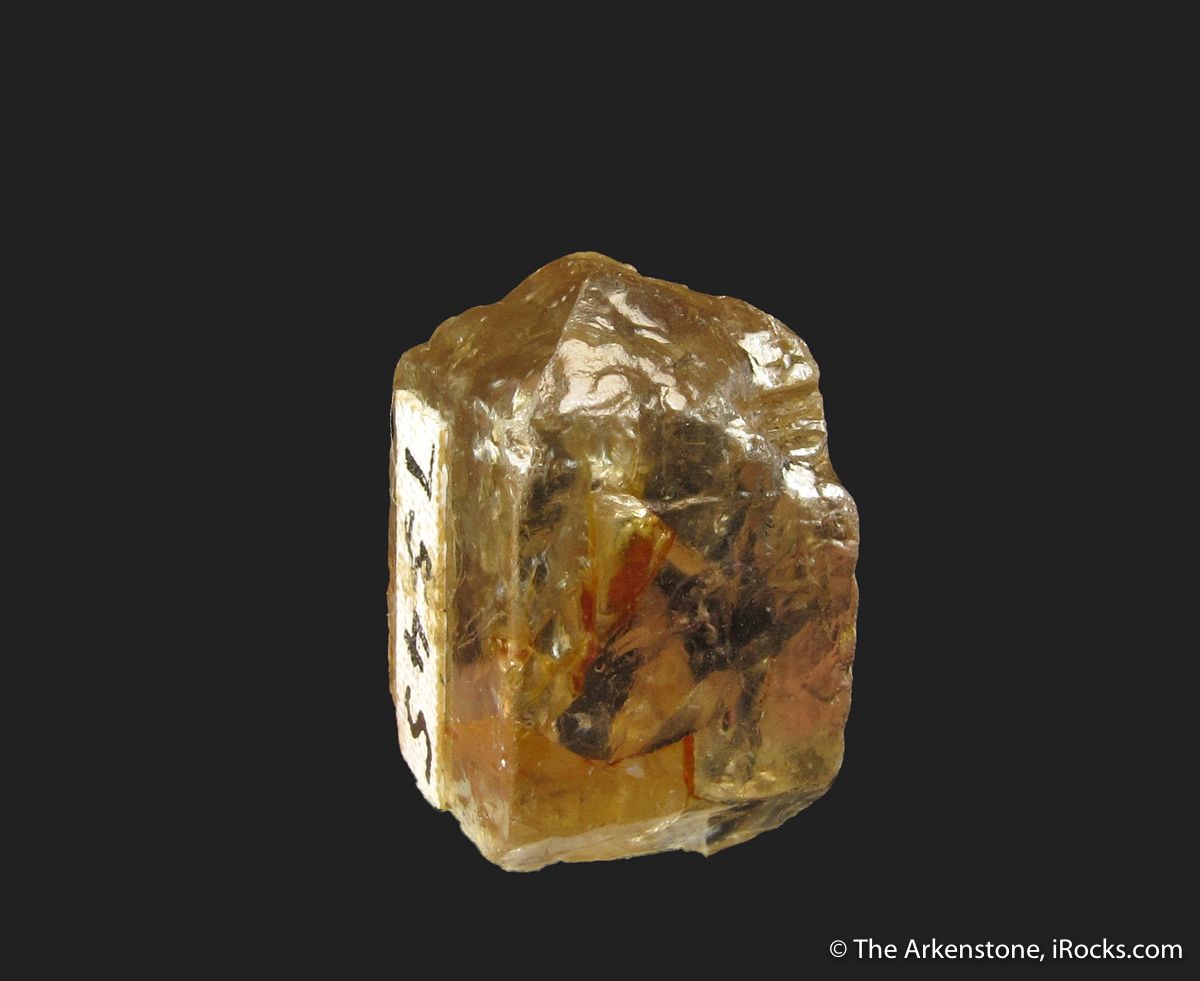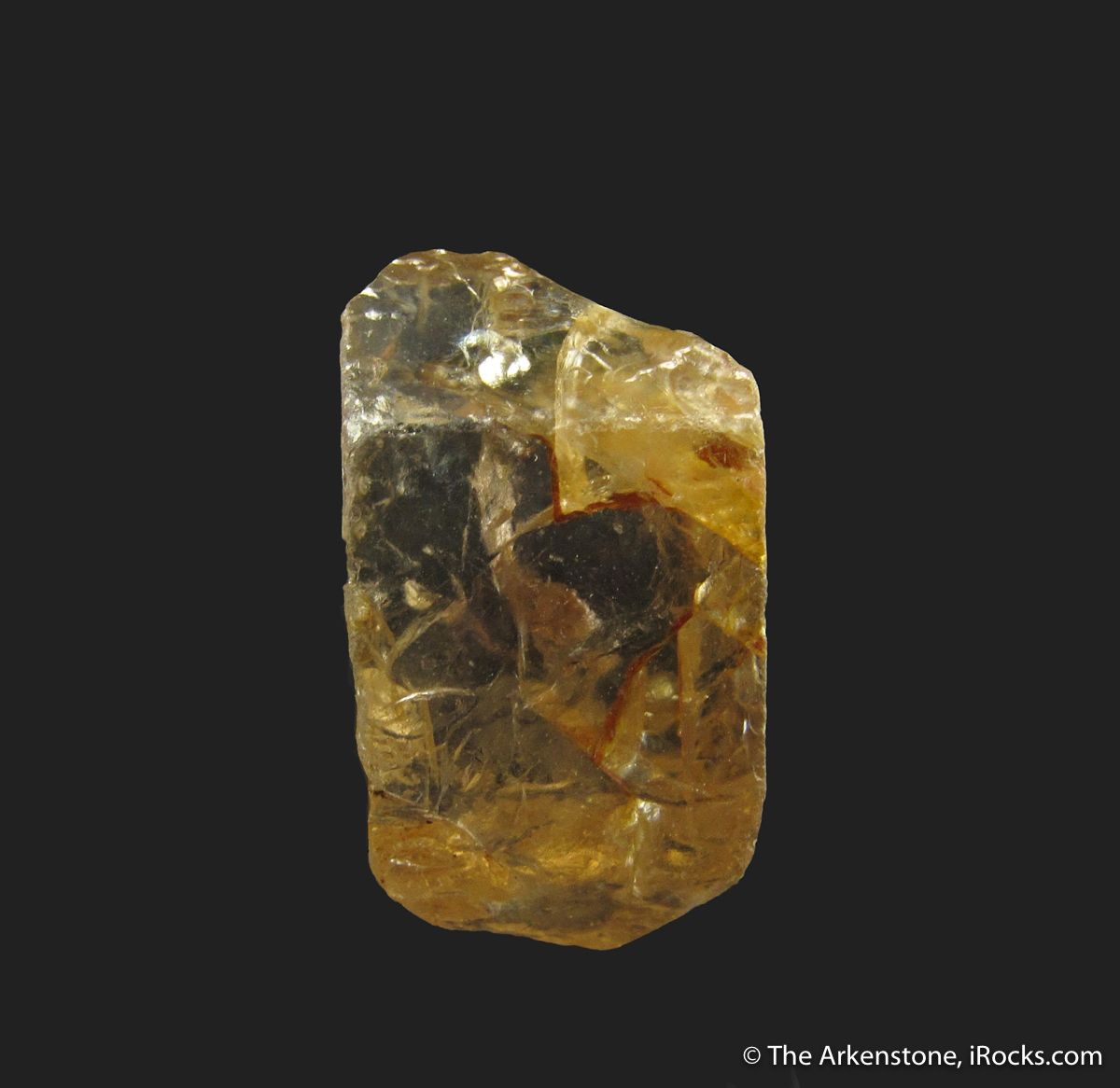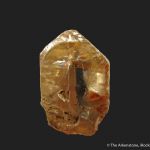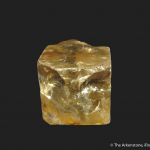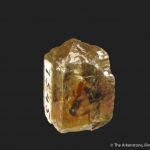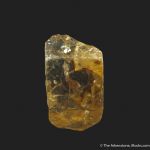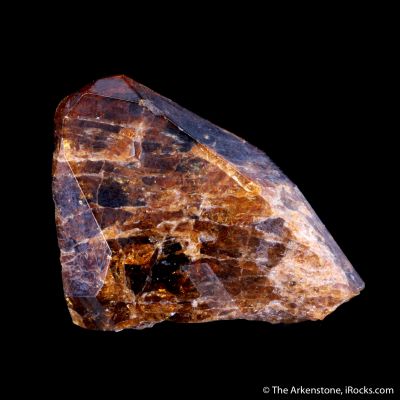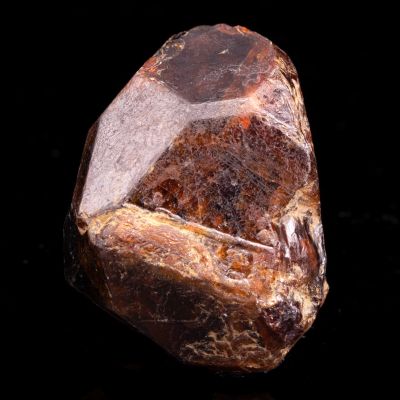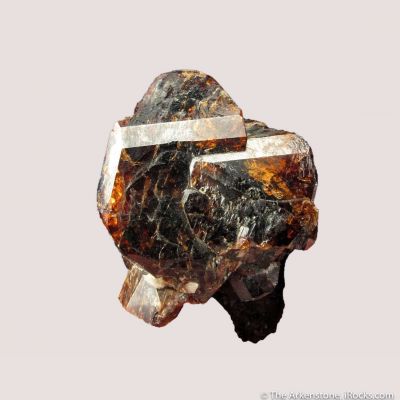- KRE-51
- Zircon (rare gem crystal)
- Harts Range, Central Desert Region, Northern Territory, Australia
- Thumbnail, 1.9 x 1.1 x 1.0 cm
- Ex. Kay Robertson
- SOLD
Very fine, totally gemmy single crystal of Zircon from the Harts Range in Australia. This single, pyramidal crystal is completely gemmy, and it has an attractive, water-clear, light amber color. The crystal is actually doubly-terminated, with some contacting only on one face of one termination. It is a competitive-level, display quality thumbnail of a very common species, in very rare quality and clarity. Considering that the only other Zircon in Mindat for this area is opaque, this 8.67 g crystal is rather remarkable. It is even better in person. Kay has owned this since 1975. As well, zircons have a profound scientific importance as reservoirs of the earth's history and a way to date the rock they are found in. Per WIKIPEDIA: Zircon has played an important role during the evolution of radiometric dating. Zircons contain trace amounts of uranium and thorium (from 10 ppm up to 1 wt%) and can be dated using several modern analytical techniques. Because zircons can survive geologic processes like erosion, transport, even high-grade metamorphism, they contain a rich and varied record of geological processes. Currently, zircons are typically dated by uranium-lead (U-Pb), fission-track, cathodoluminescence, and U+Th/He techniques. For instance, imaging the cathodoluminescence emission from fast electrons can be used as a prescreening tool for high-resolution secondary-ion-mass spectrometry (SIMS) to image the zonation pattern and identify regions of interest for isotope analysis. This is done using an integrated cathodoluminescence and scanning electron microscope.[19] Zircons in sedimentary rock can identify the sediment source. Great zircons, truly great ones, are both scientifically important and important to the collector as well.

